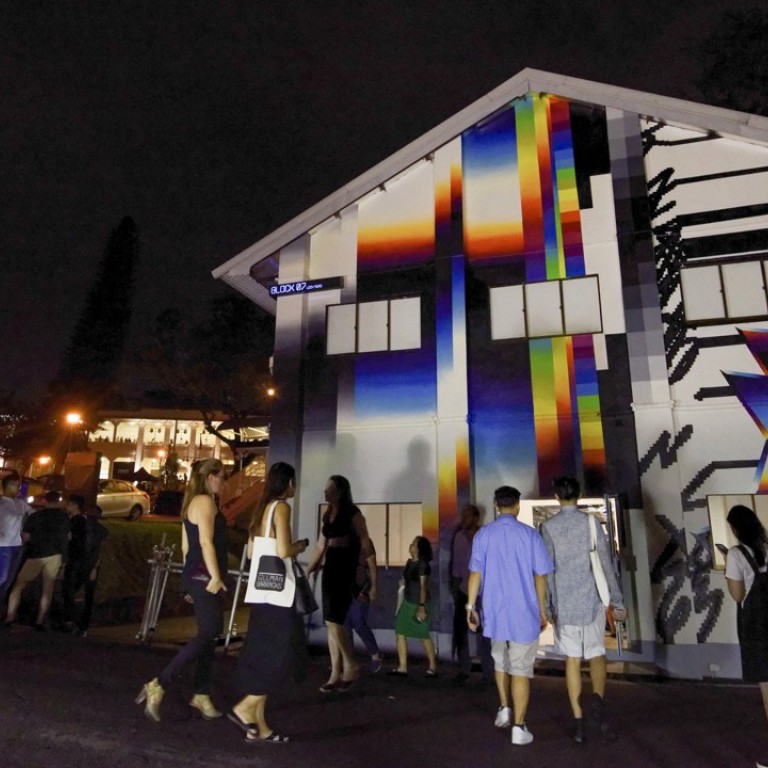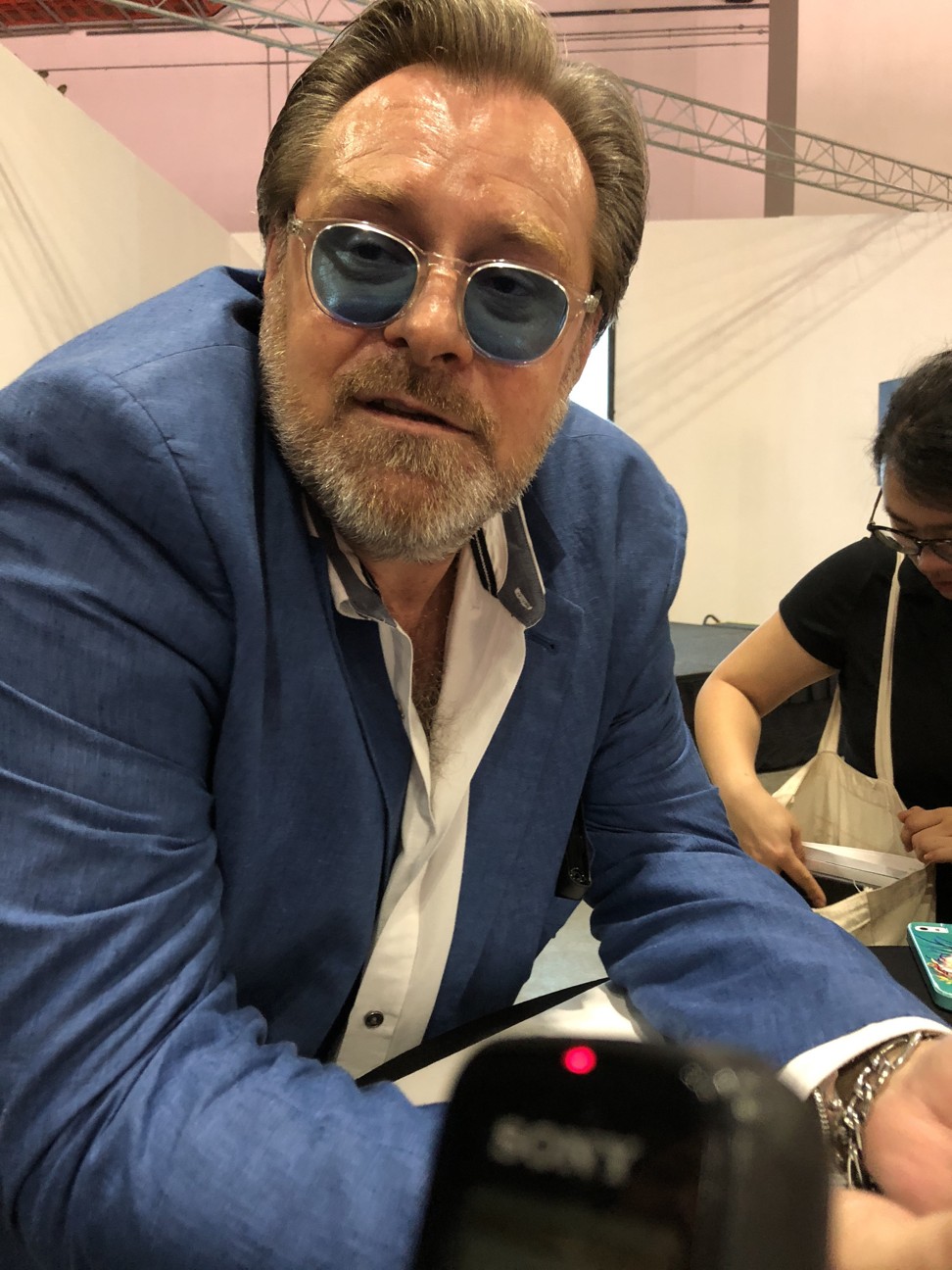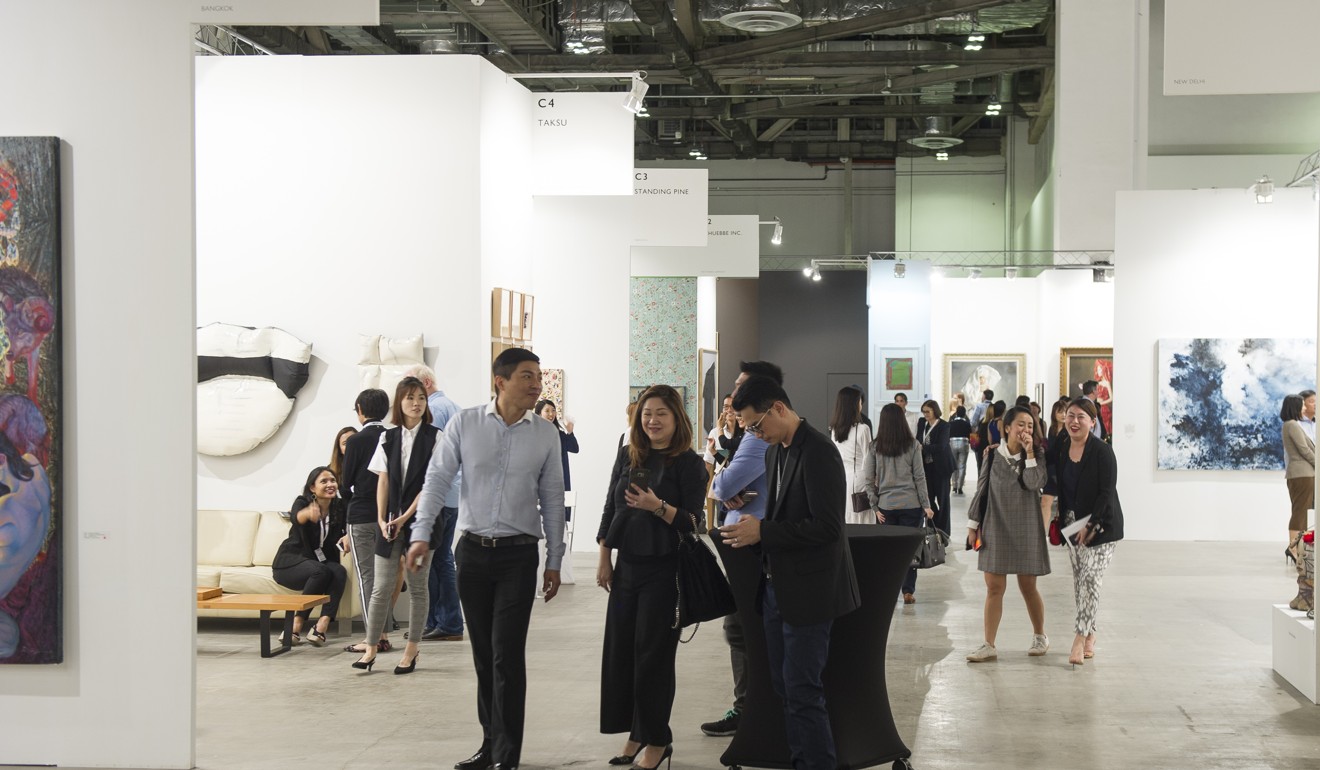
Singapore art scene losing ground to Hong Kong and Southeast Asia, says Art Stage Singapore founder
With art galleries losing interest, a lack of new galleries and other art fairs pulling out, combined with the city’s censorship and high rents and expensive artworks, Singapore’s contemporary art scene is losing ground to Hong Kong
Lorenzo Rudolf seems to be taking the adage “all publicity is good publicity” a bit too far. Speaking on the opening day of Art Stage Singapore, the president and founder of the annual contemporary art fair gave such a downbeat description of the city state’s art market that seemed like a peculiar ploy to get the show into the press.
“Strong economic growth has led to many new galleries and private museums opening in the Philippines, Indonesia and Thailand. Everywhere, everywhere, the art scene booms. The only place we have stagnation is Singapore,” he says at the preview of the markedly shrunken art fair held at the Sands Expo & Convention Centre at Marina Bay Sands.
“If the market doesn’t grow, then I will have to reflect on what I do. I sure won’t be sitting here until the end.”

Hong Kong harbourfront turned into a gallery for 18 artists from around the world
Rudolf’s “stagnation” claim seems to be confirmed by the absence of new commercial galleries and cutbacks by other art fairs. This year, the Singapore Contemporary Art Show, which launched in 2016, decided to pull the plug. The Affordable Art Fair has reverted to just one November show instead of having a spring and autumn edition.
Separately, Hong Kong’s Art Central has no plans to launch in Singapore despite rumours that it was interested in the market, according to Charles Ross, managing director.
The contrast with another Asian city competing for the crown of regional art hub seems great. In Hong Kong, international galleries are lining up to set up their first Asian outposts. David Zwirner has just opened in H Queen’s, to be followed by Seoul Auction in February and Hauser & Wirth in March, when 248 galleries will appear in the 2018 edition of Art Basel Hong Kong.

“A Filipino gallery will look at Singapore and thinks, for a space less than a third of what we have in the Philippines, the rent is 10 times more. Can I sell art at a price that is 10 times more? No. So how can I open in Singapore?” says Rudolf.
India by the Bay festival in Hong Kong: authors, a Bollywood star and a Parsee feast among the attractions
He also blames Singapore’s lack of “art production”. The city’s tough censors are bad for any forms of creativity, he says, but the city could still have done more to attract regional artists: by setting up affordable studios in Gillman Barracks for non-Singaporean artists, for example.
“With the infrastructure improving in Indonesia, the Philippines, Thailand, where you can go and talk to artists directly, there is less reason for collectors to come to Singapore,” he adds. At the same time, prices for Southeast Asian art – which is the focus of Art Stage – have risen too much, too quickly, which depresses demand.

Mark Saunderson, the man behind Hong Kong’s Asia Contemporary Art Show and the Singapore Contemporary Art Show, agrees with some of Rudolf’s assessments.
“Hong Kong is a more mature market and the community is more spontaneous in terms of buying art. Singapore is a young market and apart from a small handful of established collectors, new buyers are a lot more considered, and they keep galleries on their toes,” he says.
A three-year decline in property prices has also hurt sentiments, he adds. But he stresses that Singapore is not a “wasteland” and he believes that galleries and art fairs pitching to the right market segment could do well – even though his own mid-market fair is taking a step back this year.
Hong Kong stormwater tank becomes art space for a month in tribute to brains behind the drains
“Lorenzo has quite often said publicly that he wants to bring ‘museum quality’ art to Singapore. That is laudable, but those types of buying opportunities are beyond visitors’ reach. He is shooting for the stars,” he says.
The crowd of around 9,000 that gathered for the Art After Dark festival at Gillman Baracks – part of Singapore Art Week – certainly helped to dispel claims that Singaporeans are not interested in contemporary art.
Sure, many of the young hipster crowd were there for the all-night music performances and booths selling craft beer and lobster rolls. But there were queues for the galleries, too.
Singapore’s visual arts scene has grown steadily over the years with over 1,000 exhibitions held annually, says Low Eng Teong, assistant chief executive of sector development (arts) at the National Arts Council.
Hong Kong’s eccentric Frog King stays one jump ahead of the art-scene pack with madcap desire to spread happiness
“We acknowledge that the commercial art market here may not be growing at the same rate as audience interest in the visual arts, but we are seeing a steady interest from collectors. While attendance at Singapore Art Week events may not translate directly into sales, the collaborative efforts of all in the arts ecosystem coupled with Singapore’s geographical location as a gateway to accessing southeast Asian art, have helped enhance Singapore’s role as a regional arts hub,” he says.
A Filipino gallery will look at Singapore and thinks, for a space less than a third of what we have in the Philippines, the rent is 10 times more. Can I sell art at a price that is 10 times more? No. So how can I open in Singapore?
Audrey Yeo, founder of Yeo Workshop, says her Gillman Barracks gallery did well during art week. “We have sold two out of the five editions of Sarah Choo’s Accelerated Intimacy, and we are in serious discussion over the others. This is partly thanks to the support of local collectors,” she says.
The work is unconventional, too. Choo converted the entire gallery into a hotel and the work is an immersive installation that includes fake hotel doors, furniture and multiple videos of staged performances in a hotel room.
At the same time, Yeo says Choo is a well-established artist whose works often sell well, and that generally speaking, the Singapore market is not one that is likely to see a sudden spurt of growth. “Perhaps art fair organisers need to adjust their expectations,” she adds.
Singapore turning into arts hub while Hong Kong still stuck in mud
One gallerist who used to participate in Art Stage also raised the point that the event has its own issues that do not represent the broader development of the market. Speaking on condition of anonymity, the dealer said numerous past participants were unhappy with how Art Stage organisers insisted on coming between them and the collectors who attend the fair.
“The first editions got a lot of interest. But the management has not done a good job as facilitators. Galleries go because they want to build new relationships with collectors, but Art Stage wants to be in the way between exhibitors and collectors and doesn’t share the client’s list. That really bothers the exhibitors,” the dealer said.

“I know there are rumours we are closing. I hear it every year. But we are still here. We are still committed to Singapore. Singapore should be the hub. It still has many advantages, such as being the only multicultural country in the region,” he said.

